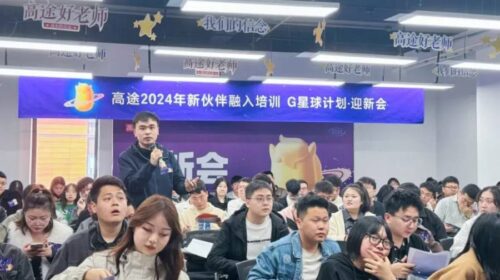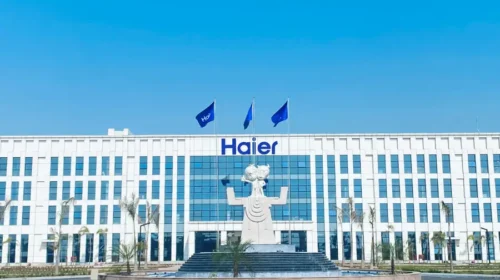China Education Group seeks to jumpstart growth with resumed M&A

The vocational school operator has recently raised funds to expand its network, as its growth slowed in the first half of its latest fiscal year
Key Takeaways:
- China Education Group’s revenue rose just 18% in the first half of its latest fiscal year, slowing from 28.9% growth a year earlier
- The company became China’s largest private educator using aggressive M&A, but has slowed down its pace of acquisitions in the last two years
By Molly Wen
Even being in a sweet spot can have its ups and downs.
After not only surviving but even thriving in recent years, even as much of China’s private education sector got hammered by a national crackdown, China Education Group Holdings Ltd. (0839.HK) is learning that being a government favorite doesn’t necessarily guarantee strong long-term growth. The company’s focus on vocational education spared it from the effects of China’s high-profile education crackdown two years ago, which focused on after-school tutoring for primary students.
But the latest interim results for China’s largest private educator show its steady growth during the pandemic may be starting to wind down as the job market rebounds with China’s official scrapping of most of its Covid controls since last December. China Education’s revenue reached 2.78 billion yuan ($402 million) in the six months through February, up 18% year-on-year, while its net profit grew by 15.1% to 1.05 billion yuan, the results show.
While those numbers look good at first glance, the growth rate is about half of the more than 37% growth the company notched in both its 2020 and 2021 fiscal years during the pandemic. Even in its 2022 fiscal year, the company’s revenue grew 28.9%, while its net profit rose by an even higher at 41.5%. That makes the latest results far from best-in-class.
The company’s stock fell 2.9% the day after the announcement, extending declines that have seen it fall from HK$13.50 at the end of January to its latest level of about HK$7. Despite that, major investment banks are still optimistic on its outlook. Haitong International pointed out the company has strong growth momentum as the industry leader, and rates it an “outperform.”
As a private educator with the biggest market cap and largest student body among listed Chinese companies, China Education is sometimes referred to by investors as the nation’s “best education stock.” It had 304,500 students at the end of last August at 14 schools located across nine Chinese cities, as well as an overseas presence in the UK and Australia.
M&A slump
Within the company’s business portfolio, higher vocational education contributed the big majority 2.35 billion yuan to its revenue in the six months through February, up 20.6% year-on-year, mainly driven by a broader increase in students attending higher vocational education institutions and higher average revenue per student. Its revenue from secondary vocational education fell 3% to 320 million yuan, as new enrollments at some schools declined due to Covid controls, prevention protocols and social-distancing measures.
Its global education business performed the best, benefiting from the lifting of border restrictions that led related revenue to jump 44.6% to 107 million yuan.
China Education was able to notch strong recent growth in part by relying on aggressive M&A. It had only three schools when it listed in Hong Kong at the end of 2017. But armed with funds from the IPO, the company acquired an average of three schools per year between 2018 and 2020. In 2021, it acquired 51% of Jincheng College of Sichuan University, the top private independent college in China, which it later renamed as Chengdu Jincheng College.
The rapid addition of new schools and students improved the company’s growth, giving it the scale to improve its teaching quality, which in turn allowed it to boost tuitions. According to a report from Cinda Securities, the average tuition rose from 10,000 yuan in the 2018/19 school year to 14,000 yuan three years later, representing a compound annual growth rate of 11.3%.
The slowdown in M&A since 2021 may owe at least partly to the company’s shrinking capital resources. As of Feb. 28, its liquidity ratio was 0.84 times, up from the 0.81 times a year earlier but still well below the 1 threshold that is considered healthy. Its cash reserves stood at 5.87 billion yuan at the latest reporting date.
More fundraising
As Hong Kong’s stock market picked up at the start of the year, China Education began to accelerate its fundraising. In January, it placed 147 million shares to raise about 1.6 billion yuan, which it plans to use for potential M&A. On April 12, it issued 500 million yuan worth of investment-grade secured bonds due in 2026, saying it will used the funds to build and expand its domestic facilities and also to replenish working capital for its overseas operations.
Unlike private education services targeted at primary students that have been mostly banned, services targeted at adults have received far more favorable government support. In December 2022, the State Council issued a paper on boosting the sector, calling for a break from the narrow and limited traditional perception of vocational education. It cited the need to make the sector more adaptable and attractive to cultivate more high-caliber technical and professional personnel.
Strong government support is key to improving vocational education and its social acceptance, including students’ willingness to apply and pay for such services. A similar policy issued in 2021 also eliminated potential investor concerns about the use of variable interest entities (VIE), a controversial form of corporate structure used by many listed companies, in the private higher education market.
At the same time, the many formerly independent colleges now under China Education’s umbrella are all hoping to increase their profitability. Such colleges were traditionally jointly run by key national universities that provided teaching resources, while private enterprises supplied funds. After restructuring such colleges, private higher education companies like China Education were required to pay one-off “divorce settlements” to their former university partners, relieving the need to pay them previous management fees equivalent to 15% to 30% of their annual tuition revenue.
Despite their strong potential, such private vocational educators are valued relatively modestly. China Education now trades at a forward price-to-earnings (P/E) ratio of about 7.9 times, higher than Hope Education’s (1765.HK) 5.2 times and China New Higher Education’s (2001.HK) 4.8 times, reflecting its industry-leading position. Whether it can maintain that position, including its relatively higher valuation, could depend on if the company can reignite its growth by restarting its aggressive expansion following its recent fundraising.
To subscribe to Bamboo Works weekly free newsletter, click here






